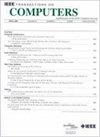基于图神经网络的门级网络硬件木马检测方法
IF 3.6
2区 计算机科学
Q2 COMPUTER SCIENCE, HARDWARE & ARCHITECTURE
引用次数: 0
摘要
目前,不受信任的第三方实体越来越多地参与IC设计和制造的各个阶段,由于硬件木马(ht)的存在,对soc的可靠性和安全性构成了重大威胁。为了克服现有机器学习难以表征电路连接关系的缺陷,本文建立了基于图神经网络(gnn)的门级HT检测方法。我们在门级HT检测的特征工程中引入谐波中心性,它反映了图中节点及其相邻节点的位置信息,从而提高了特征工程的质量。我们使用黄金分割权优化算法来配置惩罚权,以缓解极端数据不平衡的问题。在SAED数据库中,GraphSAGE-LSTM模型的TPR为88.06%,平均F1分数为90.95%。在LEDA数据集的组合HT网表中,GraphSAGE-POOL模型获得了88.50%的TPR和92.17%的最佳F1分数。在序列HT网络列表中,GraphSAGE-LSTM模型表现最佳,TPR为98.25%,平均F1分数为98.59%。与现有的检测模型相比,在组合HT数据集和序列HT数据集上F1得分分别提高了8.86%和2.48%。本文章由计算机程序翻译,如有差异,请以英文原文为准。
Hardware Trojan Detection Methods for Gate-Level Netlists Based on Graph Neural Networks
Currently, untrusted third-party entities are increasingly involved in various stages of IC design and manufacturing, posing a significant threat to the reliability and security of SoCs due to the presence of hardware Trojans (HTs). In this paper, gate-level HT detection methods based on graph neural networks (GNNs) are established to overcome the defects of existing machine learning, which makes it difficult to characterize circuit connection relationships. We introduce harmonic centrality in the feature engineering of gate-level HT detection, which reflects the positional information of nodes and their adjacent nodes in the graph, thereby enhancing the quality of feature engineering. We use the golden section weight optimization algorithm to configure penalty weights to alleviate the problem of extreme data imbalance. In the SAED database, GraphSAGE-LSTM model obtained a TPR of 88.06% and an average F1 score of 90.95%. In the combined HT netlist of LEDA datasets, GraphSAGE-POOL model obtains a TPR of 88.50% and the best F1 score of 92.17%. In sequential HT netlist, GraphSAGE-LSTM model performs optimally, with a TPR of 98.25% and an average F1 score of 98.59%. Compared to existing detection models, the F1 score is enhanced by 8.86% and 2.48% on combined and sequential HT datasets, respectively.
求助全文
通过发布文献求助,成功后即可免费获取论文全文。
去求助
来源期刊

IEEE Transactions on Computers
工程技术-工程:电子与电气
CiteScore
6.60
自引率
5.40%
发文量
199
审稿时长
6.0 months
期刊介绍:
The IEEE Transactions on Computers is a monthly publication with a wide distribution to researchers, developers, technical managers, and educators in the computer field. It publishes papers on research in areas of current interest to the readers. These areas include, but are not limited to, the following: a) computer organizations and architectures; b) operating systems, software systems, and communication protocols; c) real-time systems and embedded systems; d) digital devices, computer components, and interconnection networks; e) specification, design, prototyping, and testing methods and tools; f) performance, fault tolerance, reliability, security, and testability; g) case studies and experimental and theoretical evaluations; and h) new and important applications and trends.
 求助内容:
求助内容: 应助结果提醒方式:
应助结果提醒方式:


